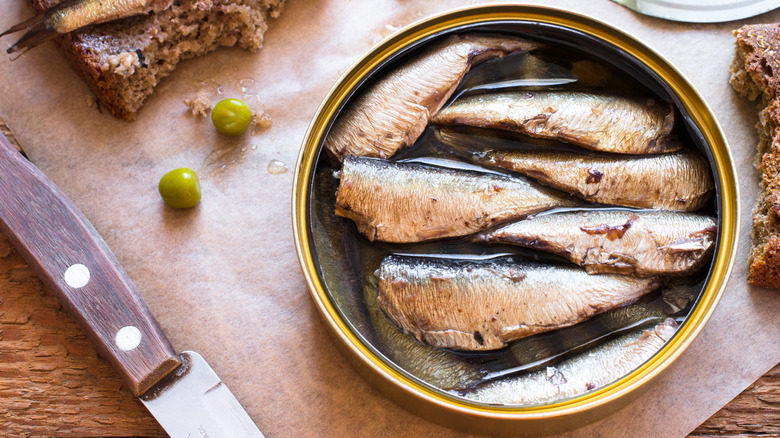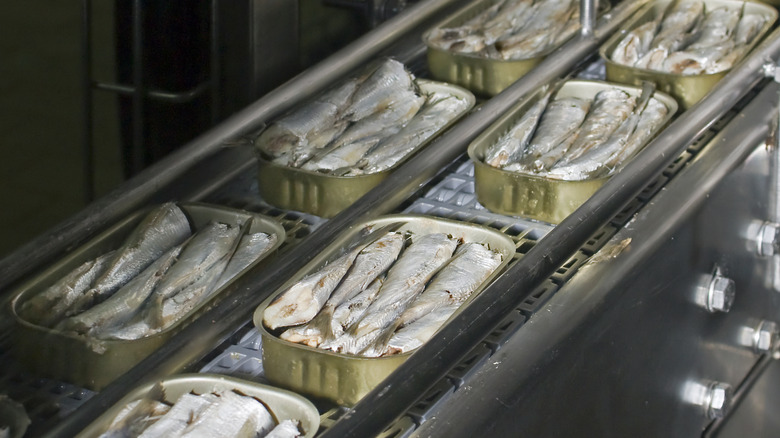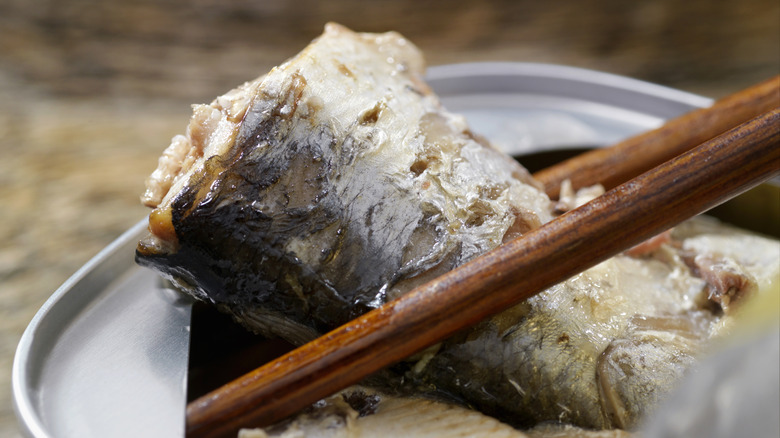Do Canned Sardines Have Bones And Can You Eat Them?
When most people think of canned fish, tuna may be the first thing that comes to mind considering it's an everyday pantry staple that is ready to eat straight out of the can and is easy to prepare with other ingredients. Canned sardines, on the other hand, may be more of a mystery if you've never used them before. When you open a can of sardines, the fish isn't shredded up like tuna. Instead, much like anchovies, they're sitting in oil or sauce, almost fully intact.
Typically, you can expect canned sardines to be gutted and descaled, and often, the heads and gills are also removed. But unless you buy a can specifically labeled as boneless and skinless, canned sardines will generally still contain both. It's natural to avoid consuming fish bones, after all, they aren't edible in most cases. However, when it comes to canned sardines, don't let the presence of bones stop you — you can totally eat them.
Why canned sardine bones are edible
Sardine bones are naturally small and soft, but that doesn't automatically make them edible. If you ate fresh sardines for example, the bones would be like any other raw fish. Canned sardines are different because they undergo a cooking and sterilization process that involves high pressure and high temperature. This causes the calcium in the bones to break down, ultimately making them easier to chew. If you cooked fresh sardines in a pressure cooker, the same thing would happen to the bones.
While you can safely eat the bones of canned or pressure-cooked sardines, you'll still be able to detect them — not so much in taste, but definitely in texture. Canned sardine bones aren't by any means crunchy or hard like those of uncanned fish, but they do have a gritty texture. Even despite this grittiness, the bones are still soft enough that you can eat them along with the fish without them getting in the way as you chew.
Is it better to remove the bones from canned sardines?
If you don't think you can handle the added texture of sardine bones, then by all means, remove them. Even though the bones are small, they're still fairly easy to remove if you choose to do so. But if you're planning to use your canned sardines in a recipe that calls for whole pieces of fish such as a sardine banh mi or sardine fish tacos, you may want to leave in the bones, because without them the fish tends to fall apart.
Keep in mind that when you remove the bones, you'll also miss out on all the nutritional benefits associated with them. Sardine bones contain calcium, and they're a good source of vitamin D, both of which contribute to bone health. Even without the bones however, sardines are still high in beneficial vitamins and minerals like potassium, magnesium, and iron, so removing them won't take away all the nutritional value. If you don't mind the texture though, it's worth keeping them in since they're perfectly edible anyway.


